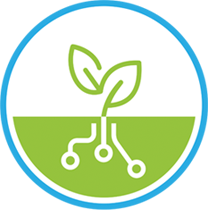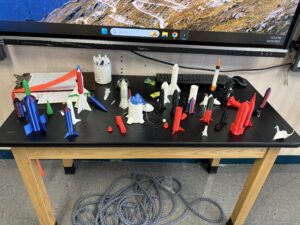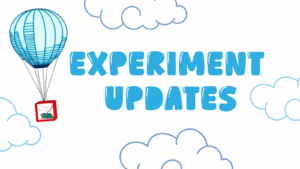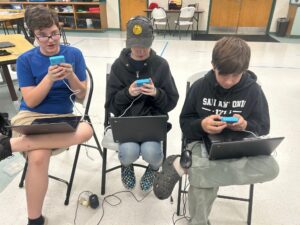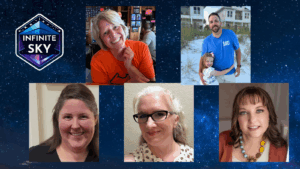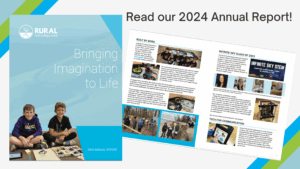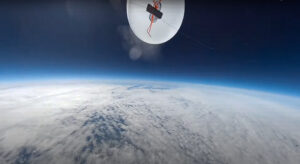We love seeing educators bring hands-on technology learning to life in creative, meaningful ways. This month, we’re thrilled to feature Aaron Miller, the STEM Instructional Coach for the North Country Supervisory Union in Vermont. With support from a Rural Tech Fund grant that provided a Bambu X1 Carbon 3D printer, and a Toshiba America Foundation rocket grant, Aaron collaborated with sixth-grade teacher Liam Gannon at Newport Elementary School to launch an extraordinary learning experience. Together, they combined 3D design, engineering, and rocket science to explore the question: What does it take to reach the stars? Their “Wolves in Space” project is a shining example of how technology and curiosity can ignite powerful learning experiences.
Below, Aaron shares his full write-up of the project, including lesson ideas, resources, and reflections to help other educators bring similar excitement to their own classrooms.
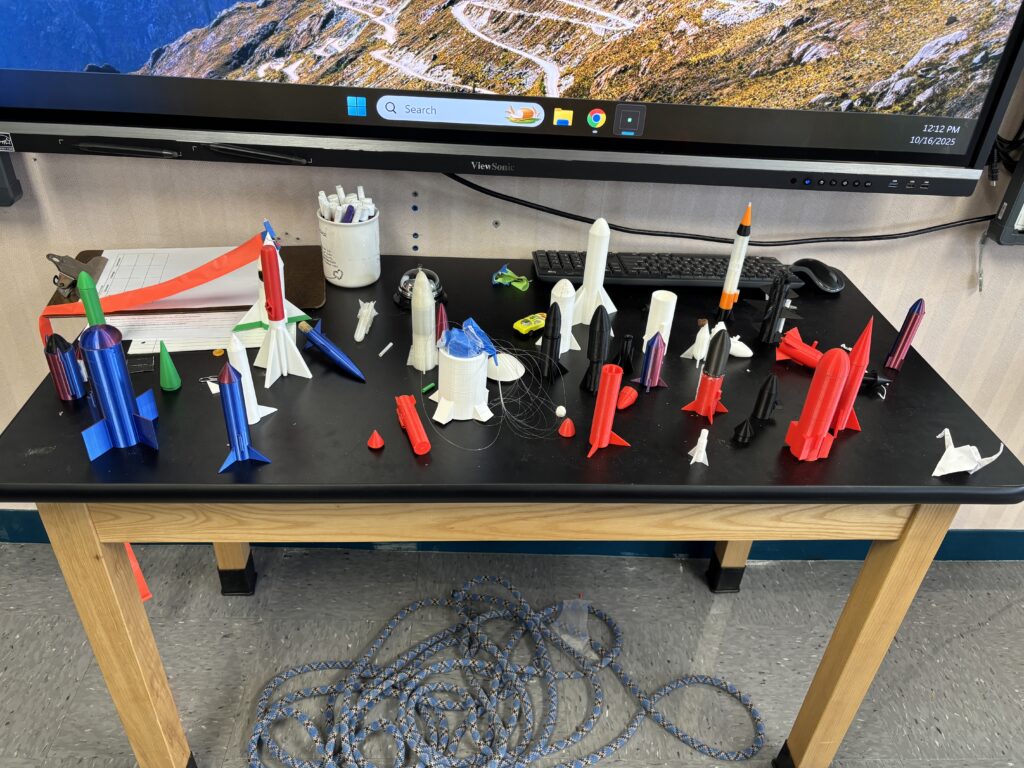
Here is the write-up shared with us from Aaron:
The stars aligned for grade 6 students at Newport Elementary School (NCES) when a grant-funded Rural Tech Foundation Bambu X1 carbon printer collided with a Toshiba America Foundation rocket grant. This philanthropic convergence spawned an engaging idea between Liam Gannon, Grade 6 science/social studies teacher and district STEM coach, Aaron Miller: to have students learn the engineering and design cycle by creating 3D rockets in TinkerCad and then launch them to study their flight characteristics using Estes A3-2T mini engines.
We hooked the students by introducing the recent space race between the US, India, China and Russia. We used the SpaceX Starships launches as a great example of failure in engineering and the importance of perseverance. There are some ideas of what we shared on this public Google Slideshow. Our district has adopted the NGSS since 2013. We used this project to address the NGSS engineering and design standards MS-ETS 1-1, MS-ETS 1-2 and MS-ETS 1-3.
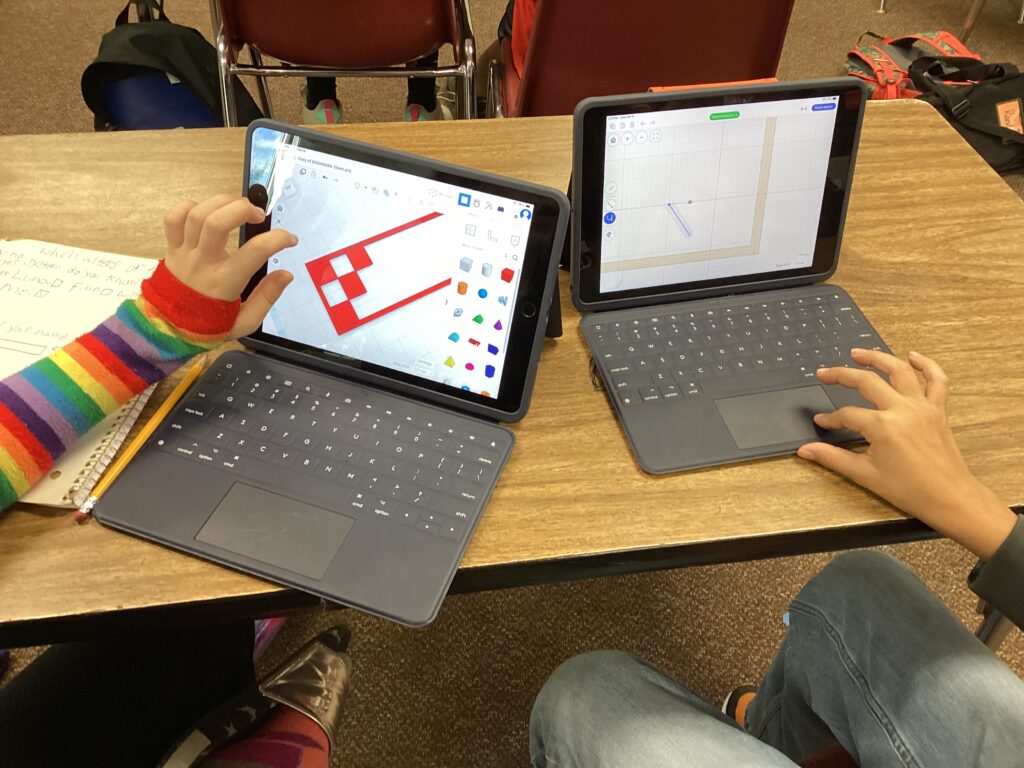
Liam has three rotations of grade 6 students. He differentiated the criteria and constraints for each group depending on their overall ability. For his highest functioning group, students came to an agreement regarding criteria for the mission and the constraints. We test-launched and measured a few teacher-made 3D printed rockets so students could get an idea of the factors at play with this project. They developed three mission criteria:
- Launch and return a Lego person unharmed
- The rocket must reach at least 125 feet high
- The rocket must have a flight time of at least 4 seconds.
The other two classes needed teacher-created criteria and constraints scaffolded to help them succeed.
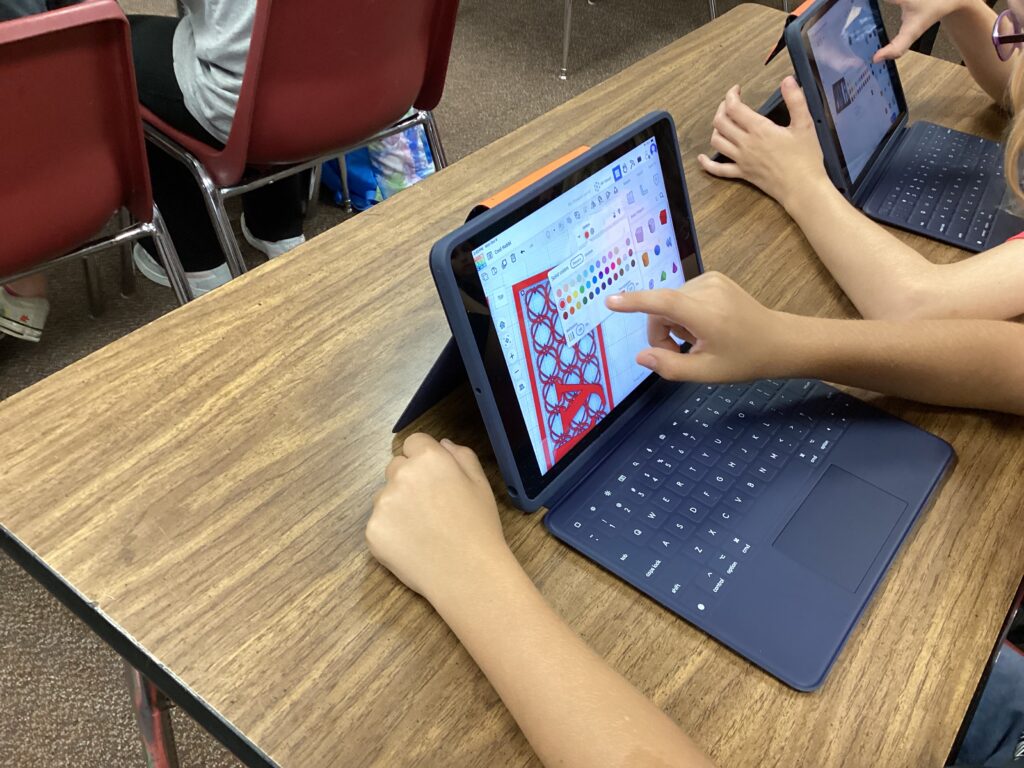


Students worked through the Engineering and Design Rockets project template to describe the problem, state their criteria and constraints and to begin designing. Rocket part shapes are actually pretty simple and they quickly began creating different prototypes. Students could do this digitally or with paper and pencil. Students were trained on TinkerCad using a few of their tutorials and direct instruction to show them how to create and manipulate their rockets. Students could take screenshots of their final prototype design from TinkerCad and insert into their lab report instead of physically drawing it. This helped for students less adept at drawing by hand.
Students shared their TinkerCad designs with Liam by uploading through a Google Form and he printed the rockets. We used one Bambu X1 Carbon and three Dremel DigiLab printers. This was enough printing power to keep up with his students. Once the first prototypes were finished we began launching rockets. We used an Estes Alti-trak to measure the angle to the highest point for each rocket and recorded each launch to get the flight time. Classes that had Lego person retrieval and safety checked to make sure their Lego person came back safe.
Students used their first prototype performance, recorded on their engineering reports, to redesign and improve their rockets. Most students were able to get a second prototype finished and launched. The Estes A3-2T engines are small enough to be used on a small playground but go high enough (if your rocket is well designed) to really impress.
Liam was using this activity as a formative project to launch students into engineering and design. Student responses were purposely kept concise and video reflections were encouraged for some students using Book Creator to increase access to their ideas. Overall, this project exceeded teacher expectations by engaging students, skilling them up in 3D design and giving them hands-on experience designing around a relevant and important real world topic. It doesn’t get much better than this!
Below are the engineering/design template and rubric used for the project (shared as both a PDF and Word in case people want to customize it for their kids):
This project is a powerful reminder of what’s possible when educators pair creativity with the right tools and support. We’re grateful to Aaron, Liam, and the NCES team for sharing their process and for showing how hands-on STEM learning can inspire curiosity, perseverance, and real-world problem solving. If you decide to bring any part of this project to your own classroom, we’d love to hear how it goes—reach out and share your stories so we can continue celebrating and supporting innovative educators everywhere.
